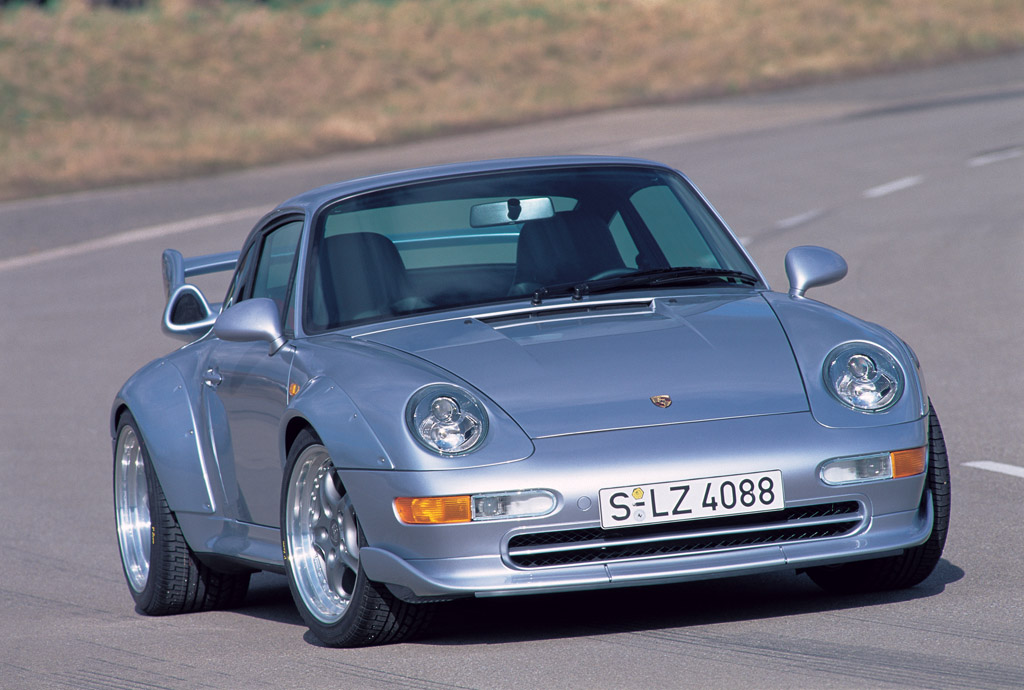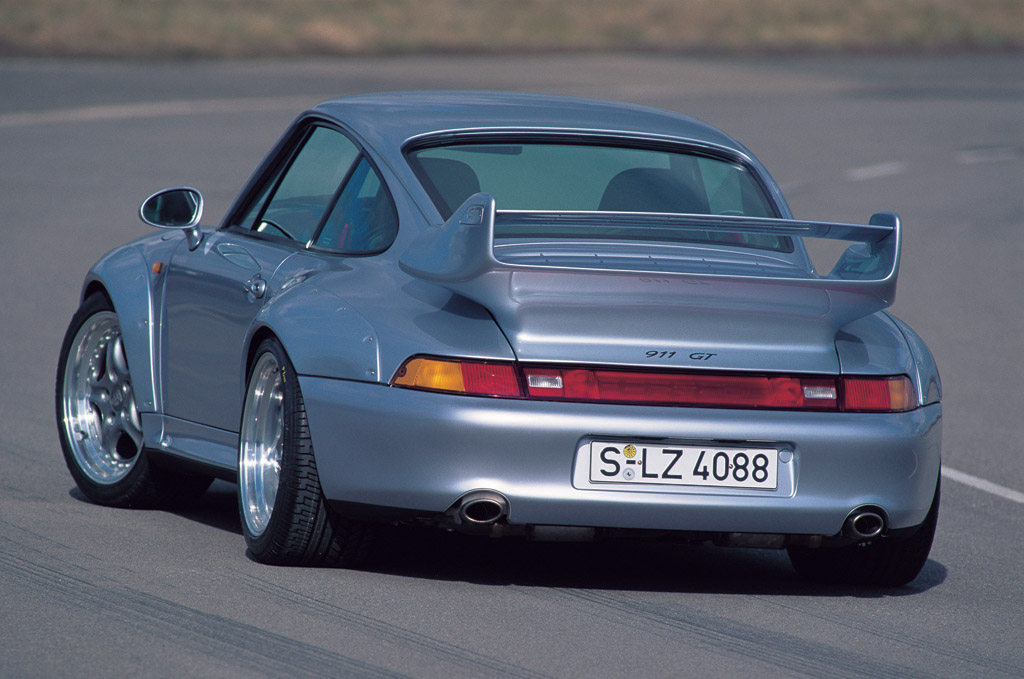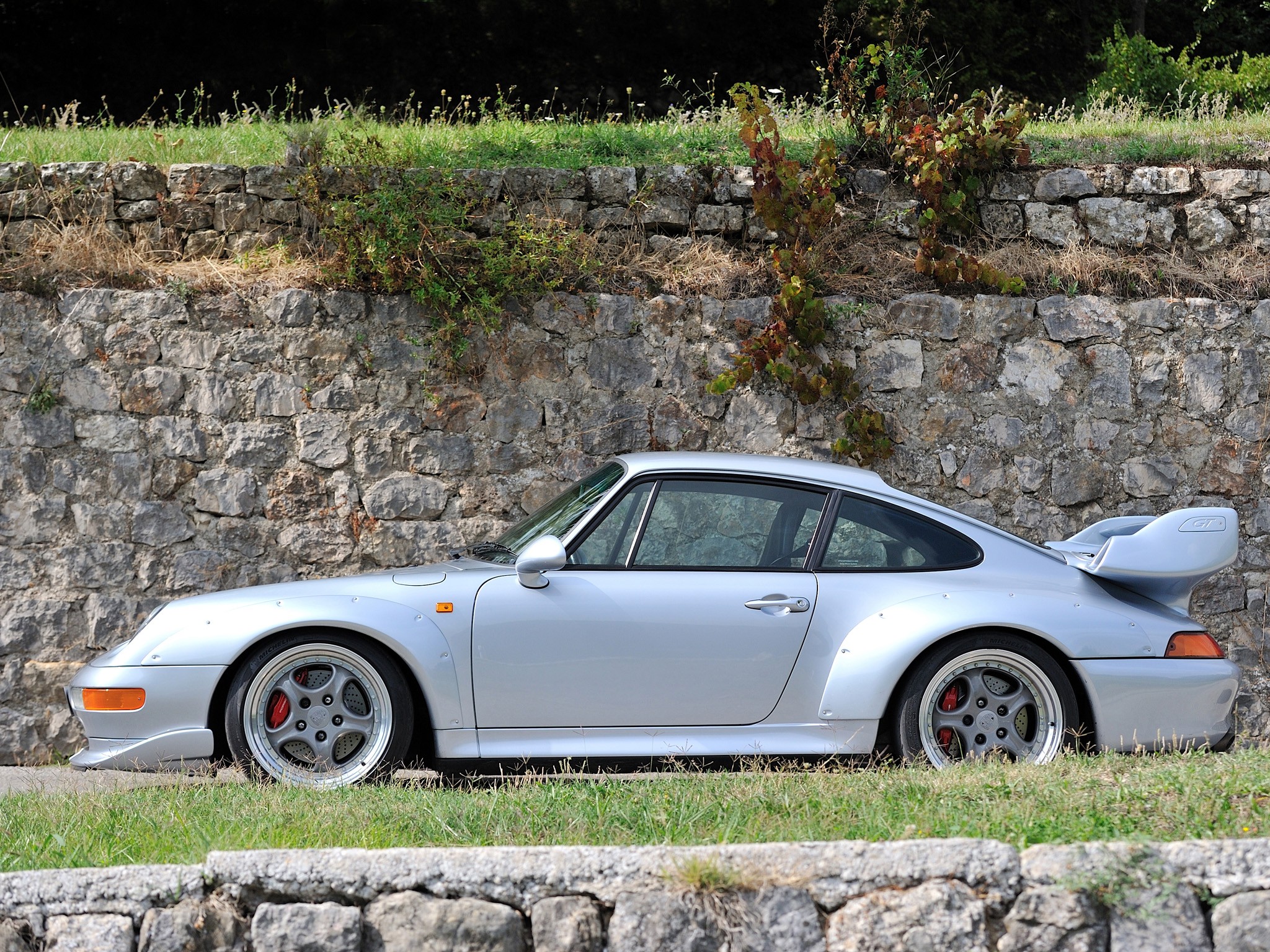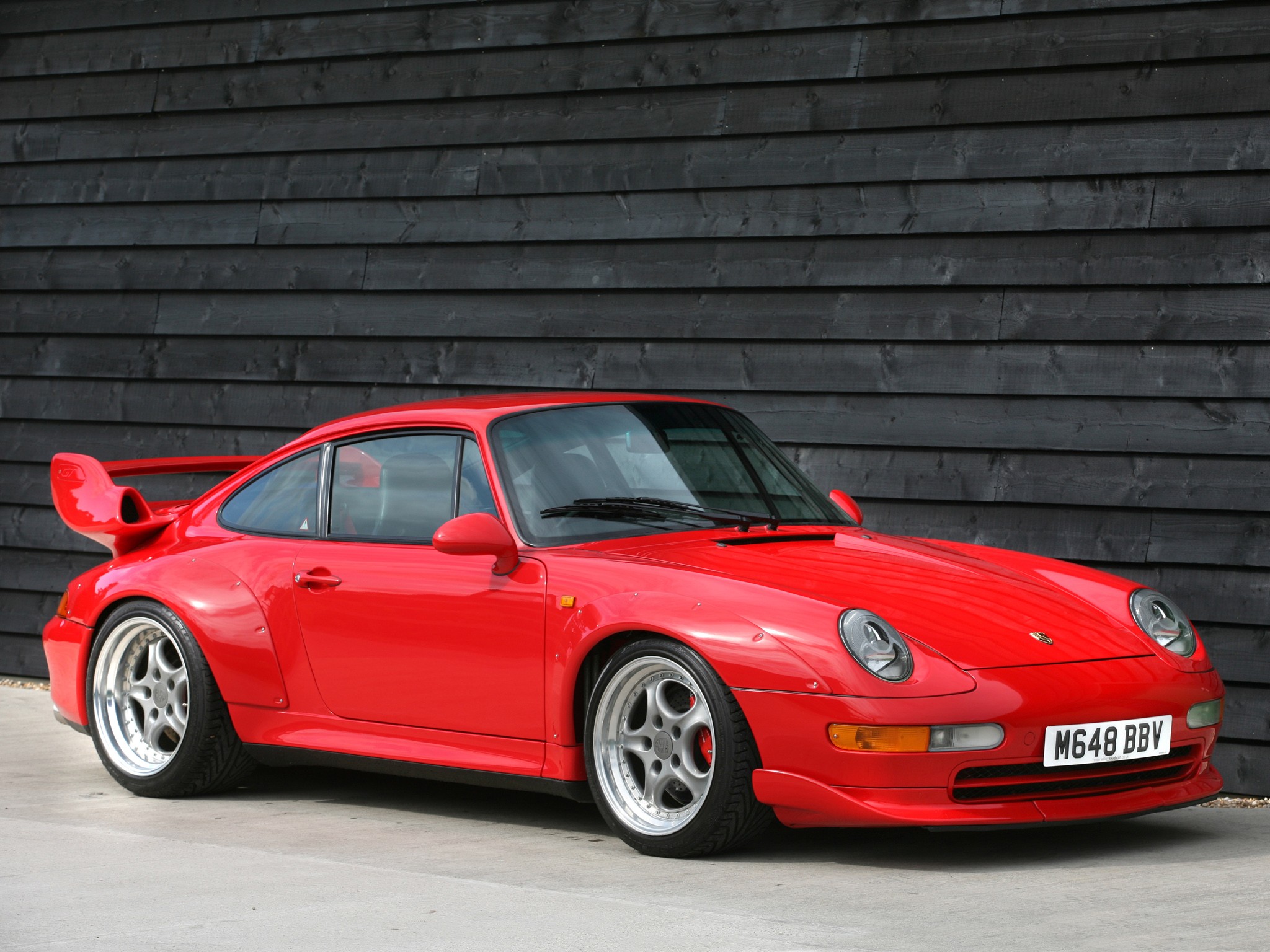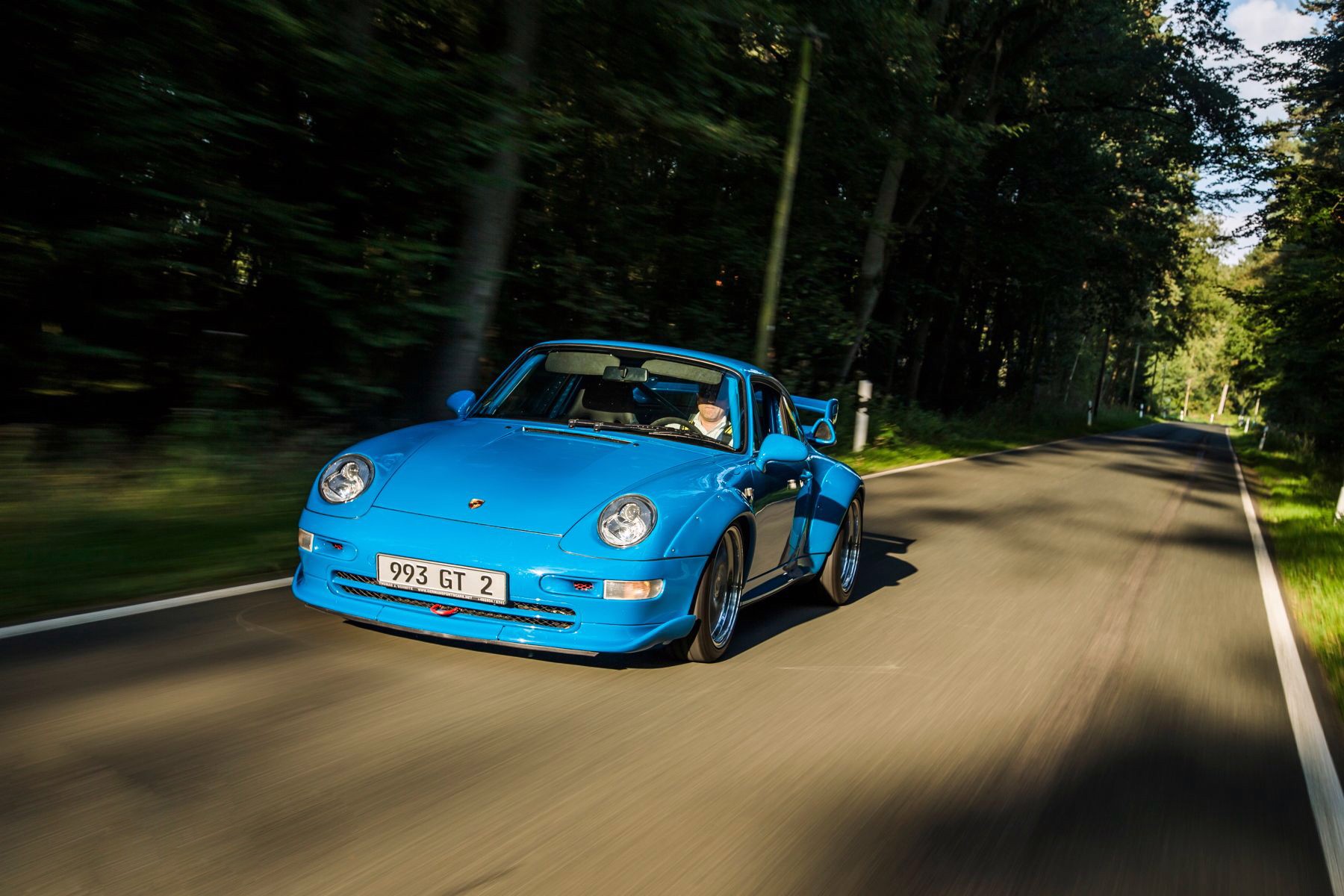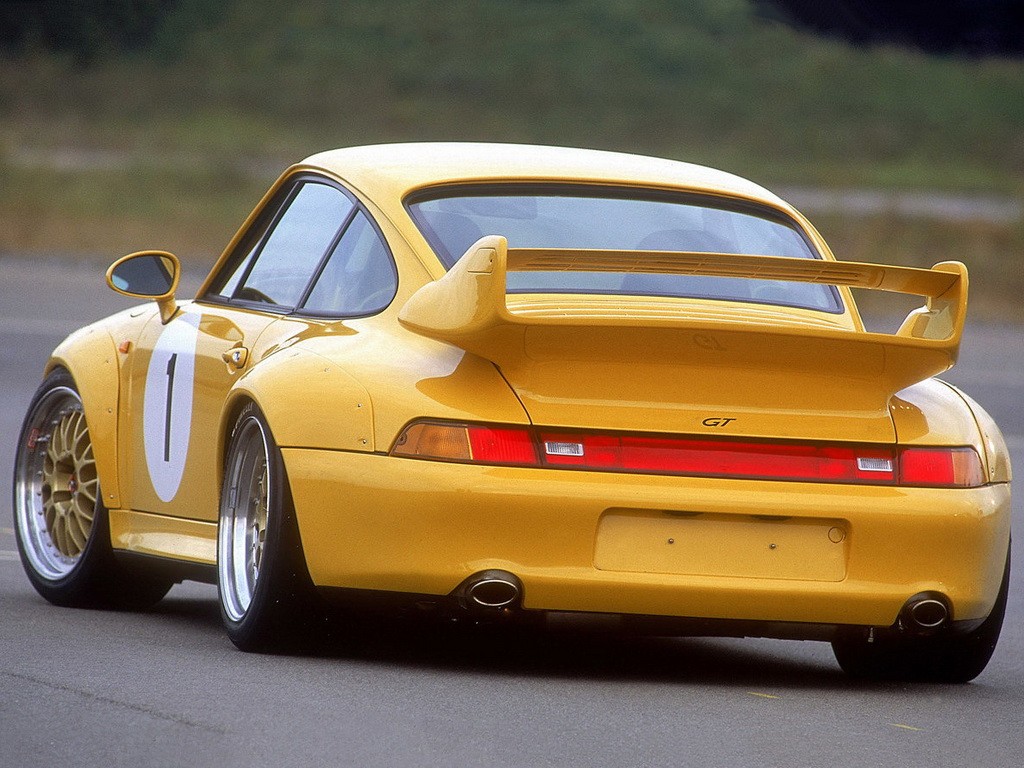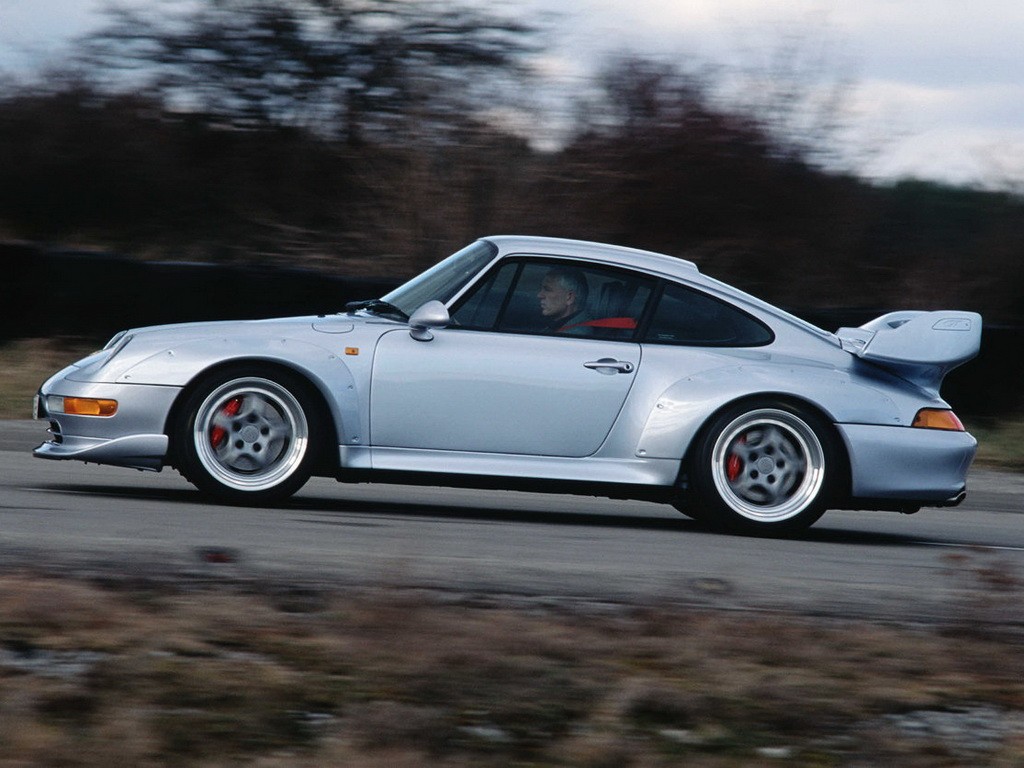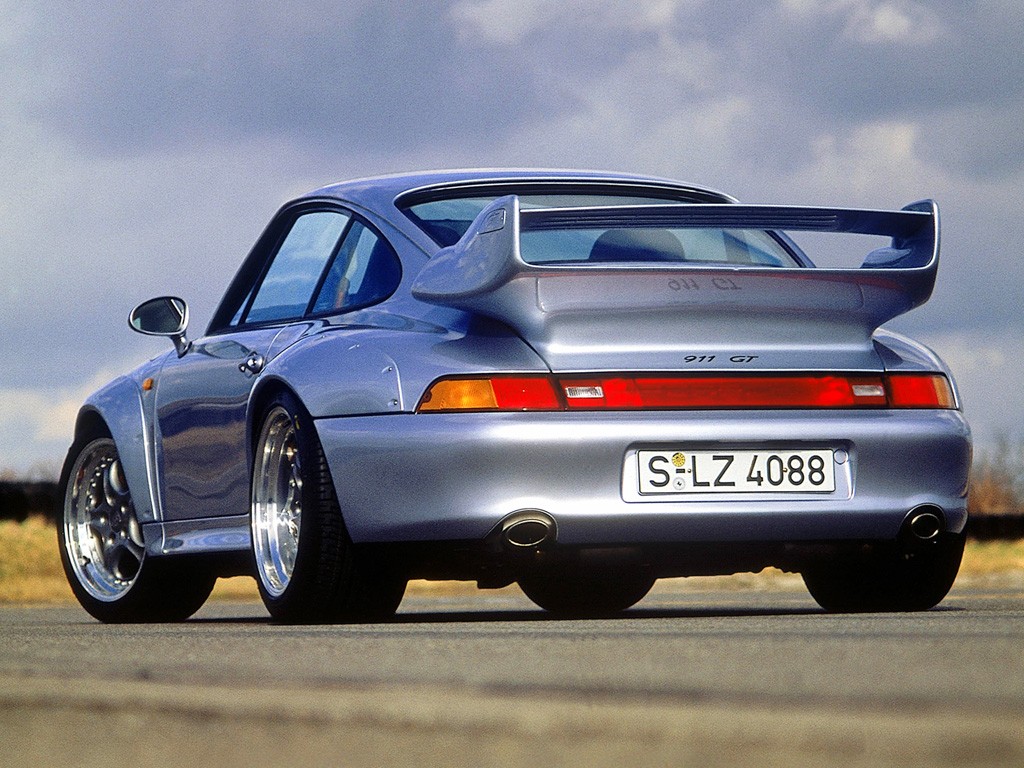(1995 – 1996, 1998) Porsche 911 GT – Ultimate Guide
The 993 Porsche 911 GT2 (or GT as it was initially called) was built in order to meet homologation requirements for the GT2 class racing which had banned all-wheel-drive vehicles by the mid 1990’s. As a two-wheel drive vehicle, the GT2 had significant weight savings as compared to the standard 993 Turbo from Porsche, making it instantly competitive in racing. The engine was a re-worked 3.6-liter turbocharged unit from the Turbo model, but it was enhanced to produce 424 hp. It was paired exclusively with a 6-speed manual with racing gears. Sold with these specs for 1995 and 1996, the 911 GT2 received an update for the 1998 model year, with output jumping to 450 bhp and 432 pound-feet of twist.
The 993 GT2’s original 3.6 L (220 cu in) engine generated a maximum power output of 316 kW (430 PS; 424 hp). The 993 GT2 features removable and replaceable bolt-on flares in order to fit wider wheels for racing and for quick replacement in the event of any race-related damage. According to RM Sotheby’s, between 1995 and 1998, Porsche would produce 194 GT2’s; 161 of those were for street use (Base Model), 33 were designated as Club Sport versions, and approximately 80 were built strictly for competition as a standard Racing variant and an Evo Variant as well. Because of their limited production and racing heritage, the 993 GT2 is hightly sought after by collectors today.
The sheer, inexhaustible potential of the 911 concept proves to be, in the GT2 and GT2 Evo vehicles entered by customer teams, a consistent winner at long distance competitions. The GT2 rolls to the start sporting a modified 911 Turbo body. The racing sportscar is prepared by Porsche following the Le Mans GT2 regulations for the over 1,150 kg weight classification. It features a 3.6-litre engine with two turbo-chargers (KKK 24 with 33.8 mm restrictors), which delivers around 450 hp at 5,750 rpm. Even this racing vehicle, with its suspension featuring a McPherson front axle and Porsche multi-link rear axle with LSA system, closely resembles its production relative.
Exterior & Interior
Although heavily based on the 911 Turbo, the GT2 looked quite radical for the mid-1990s. It was, after all, a road-legal race car. The 911 Turbo was already menacing by appearance, but the GT2 took things up a notch by means of a more aggressive front bumper with side canards, widened fenders, and a massive rear wing with air scoops in the struts. New, wider wheels were also crafted for the GT2 and shod in fatter tires. The ride height was also dropped, taking the GT2 closer to the ground compared to other 993-gen 911s.
The aerodynamic modifications brought dramatic improvements on the performance front, enabling the GT2 to charge from 0 to 60 mph in under four seconds and reach a top speed of 187 mph, quite a benchmark for 1995.
The GT2’s wider fenders were made from lightweight fiberglass to help the sports car lose more weight. Porsche actually cut the Turbo’s normal fenders and replaced them with bolt-on plastic pieces. The strategy not only helped ease the repair of damaged to the fenders, but also gave the road-going version a distinct racy appearance.
The GT2’s appearance was rounded off by “911 GT” badges on the engine bonnet, between the taillights and the huge wing. The “GT” is not a typo, as the street version of the GT2 race car was named like than until 1997. Starting 1997, Porsche changed its name to GT2 and labeled its rear end it accordingly.
Unlike today’s Porsches, the interior of the 993-generation GT2 was rather spartan. It mirrored the cabin of the 911 Turbo for the most part, sporting the same simple dashboard with a long gauge cluster section, center-mounted A/C vents and the company’s then-new four-spoke steering wheel. While most of its convenience features would seem ancient as of 2015, the GT2 had all the characteristics of a modern-day, road-legal race car, including the flat door panels and leather-covered bucket seats — the latter came standard. Sure, the leather-covered dash and the floor mats added a dash of a premium to this otherwise “born to race” sports car, making it somewhat suitable for daily use, but the GT2 did not feature rear seats, which were ditched as a weight-saving feature.
Customers who wanted their GT2 to mimic the racing version even more had the Club Sport pack as an option. The bundle added race-spec Recaro seats with six-point harnesses, a fully integrated roll cage, a battery cut-out switch, and a fire extinguisher. Drivers who wanted to spend less time at the track, on the other hand, could have their cars fitted with a stereo, leather sports seats from the 911 Turbo 4, driver and passenger airbags, A/C, and electric windows. Granted, Porsche made sure it could build the first-gen GT2 to meet many tastes, from racing enthusiasts determined to hoon their car on the track during weekends, to customers who needed to get to work in a jiffy.
Engine & Drivetrain
Lurking under the GT2’s rear bonnet was the legendary air-cooled, twin-turbo, flat-six engine displacing 3.6 liters. Although based on that of the production 911 Turbo, the mill was tuned to produce 424 horsepower and 400 pound-feet of torque, 22 extra ponies when compared to the Turbo model. The added oomph coupled with its low curb weight of only 2,855 pounds enabled the GT2 to sprint from naught to 60 mph in an astounding 3.7 seconds, making it quicker than most supercars of the era. On the drag strip, the beefed-up 911 needed only 12.1 seconds to run the quarter mile. Top speed stood at 184 mph, yet another fantastic figure for the era.
Sold with these specs from 1995 until 1997, the 911 GT2 received an update for the 1998 model year, with output jumping to 444 ponies and 432 pound-feet of twist. The 20 horses were enough to shave a tenth of a seconds off its 0-to-60 time, bringing it down to 3.7 seconds. Top speed increased to 187 mph. This version of the GT2 was known as the Evolution and was available by special request. Both cars came equipped with a specifically tuned six-speed manual transmission.
Built on 911 RS underpinnings, the GT2 also featured adjustable suspension with solid bushings, variable stabilizers and adjustable anti-roll bars. Additionally, the GT2 was updated to a stiffer rear subframe and link bearing for more precise handling, as well as new front axle kinematics.
Stopping power was provided by ventilated and perforated 12.6-inch discs clamped by four-piston aluminum calipers, yet another benchmark for the 1990s sports car. Unlike the 911 Turbo, the GT2 was rear-wheel drive, as per FIA specifications for GT2-spec racers, which also led to significant weight savings for both the road and the race cars.


